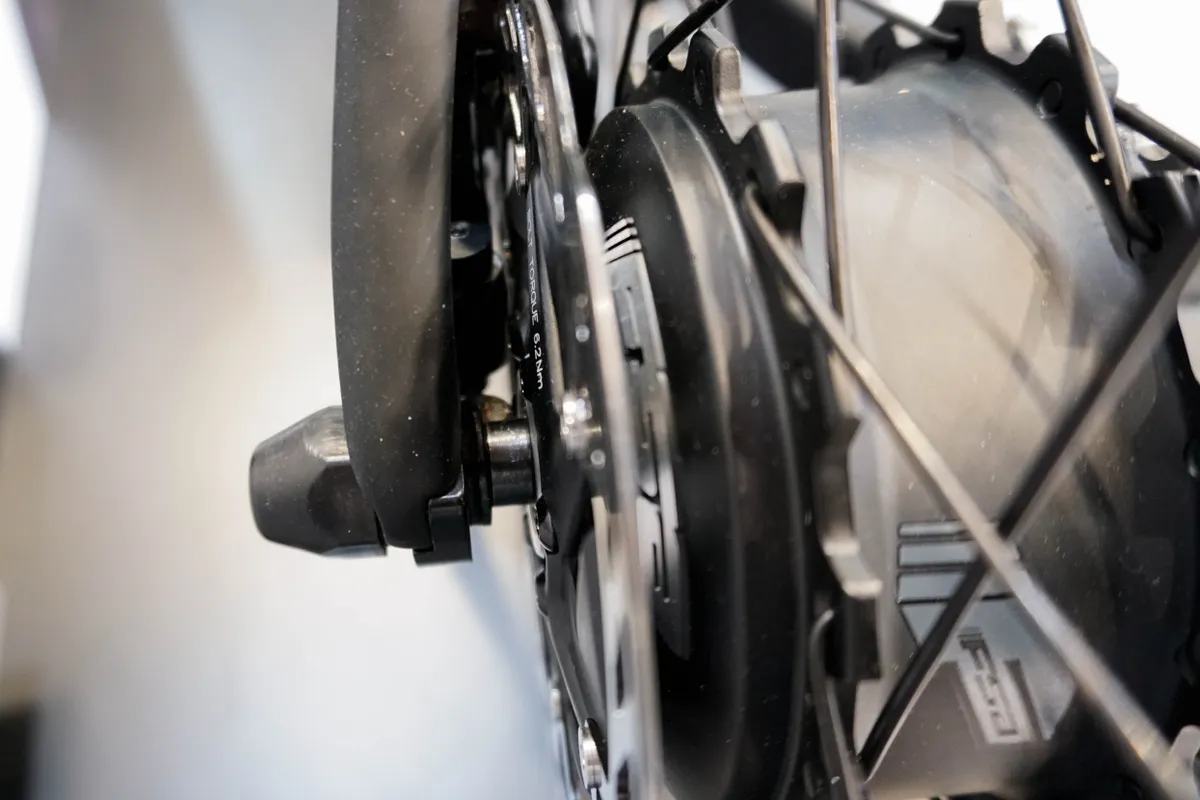Dubbed the FSA System, the motor is FSA’s first foray into electric bike technology.
Designed and targeted specifically at electric road, gravel and commuter bikes, FSA’s latest project aims to be as integrated with the bike’s frame as possible, eliminating flapping cables and unsightly batteries.
- All our Eurobike 2019 coverage
- CeramicSpeed’s mad chainless Driven drivetrain now changes gear, and it’s for mountain bikes too
FSA System power, batteries and assistance modes
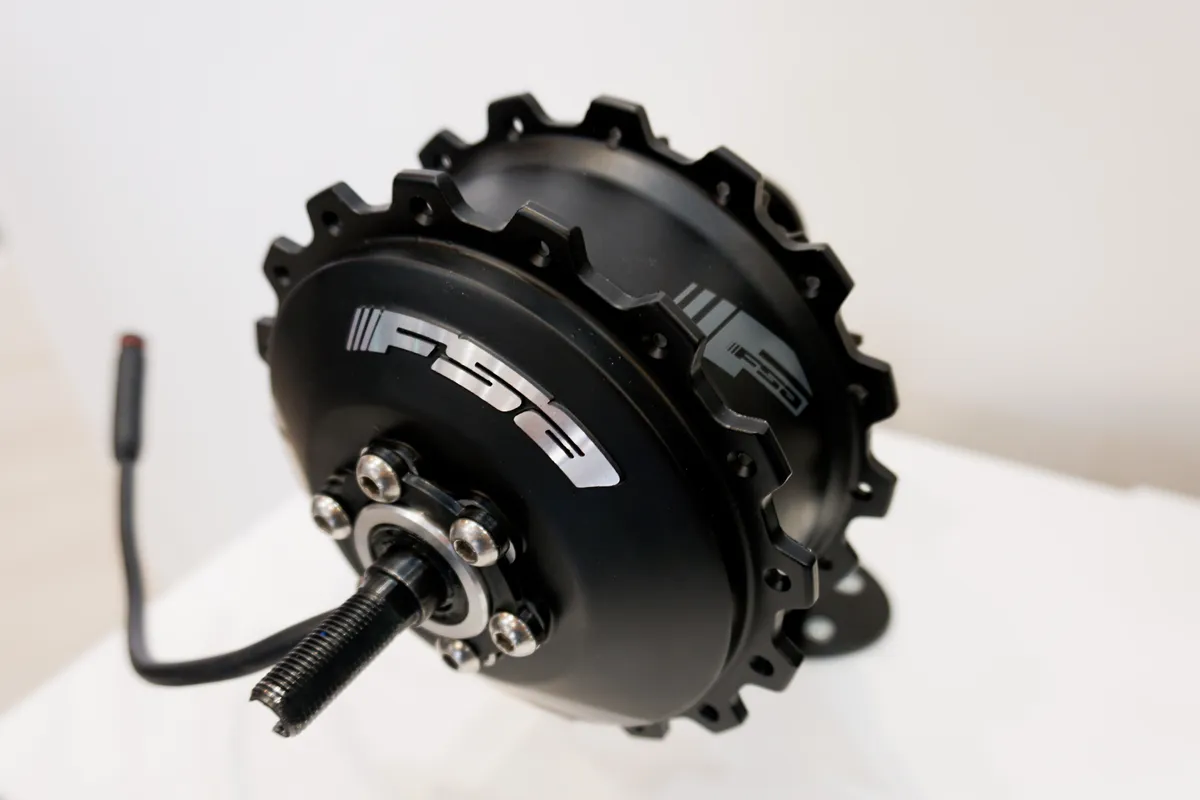
The 250W motor is located in the bike’s rear hub rather than at the cranks or on the frame like Brose, Bosch and Shimano units. This helps to keep the bike looking as traditional as possible with no additional bulk around the bottom bracket.
Hidden in the frame’s down tube is the motor’s 20-cell 250Wh battery. Riders will be able to double their battery life by connecting an additional, externally-mounted battery.
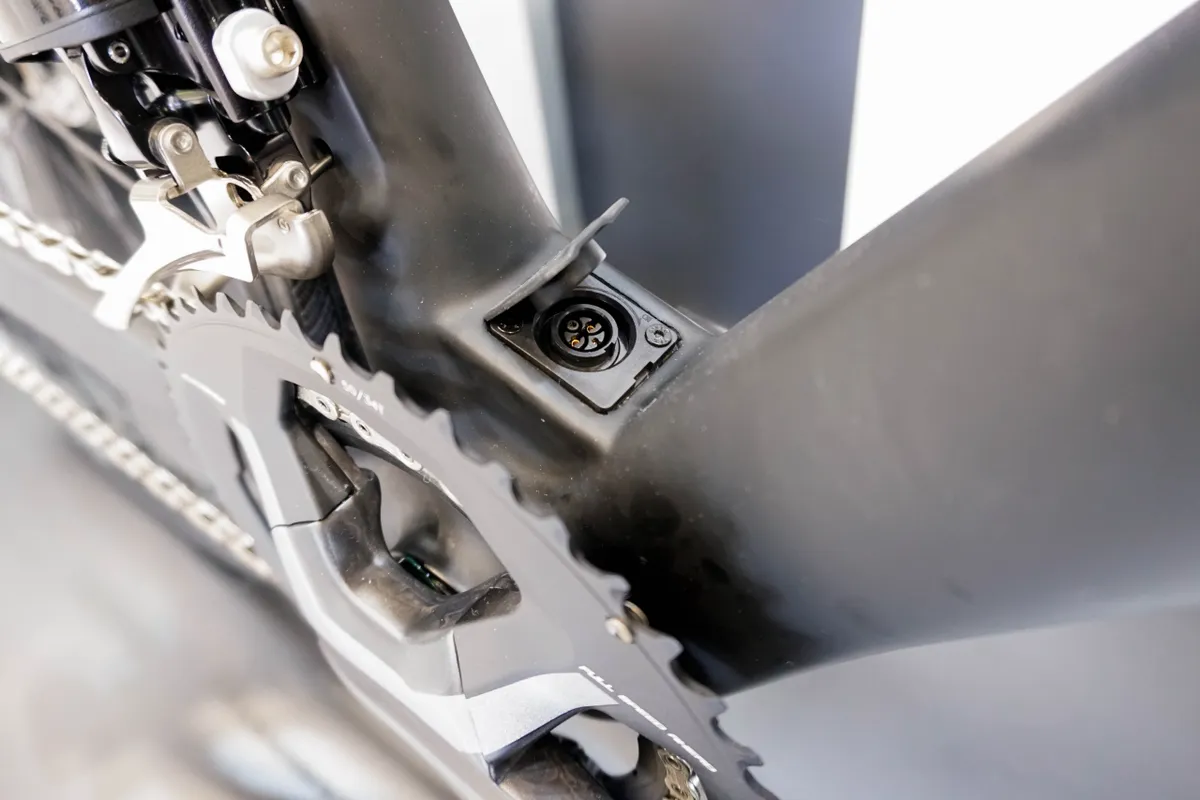
This extender battery is mounted to one of the bike’s bottle cage bosses, assuming the bike has two sets of mounts.
The system offers five assistance modes spanning from Eco, which gets you up to speed quickly when you’re pulling away from a stop or need to punch the pedals on a snappy climb, through to the Boost mode that offers the maximum assistance available.
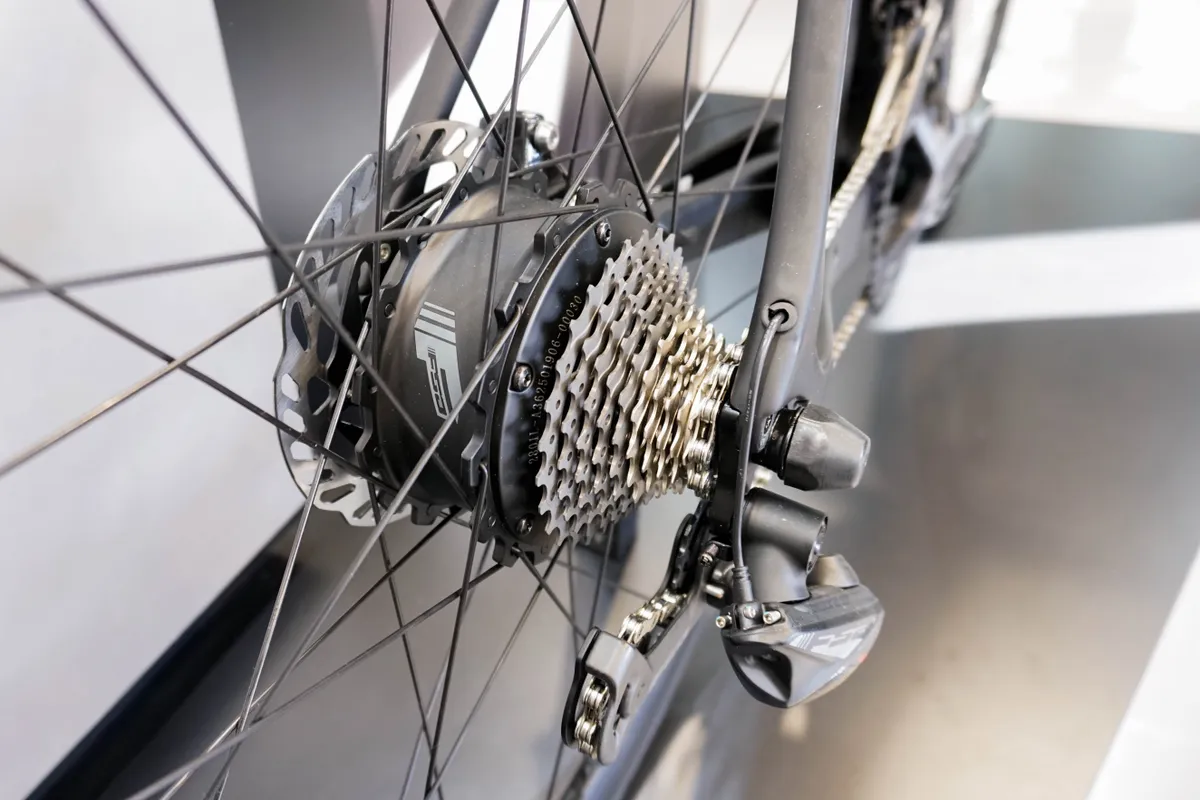
Like all electric bike systems, the motor stops providing assistance after 25km/h in Europe and 32km/h in the USA. Once the motor cuts out, FSA claims the system is virtually friction-free.
FSA System motor details
The motor has an integrated torque sensor and two speed sensors that, FSA claims, let it adapt and react to different riding styles quickly and virtually imperceptibly. On top of that, FSA says the motor runs at 55 decibels or less.

Because the motor is integrated into the bike’s hub, q-factors have been kept down so if you’ve got fussy knees it looks like the FSA system could be a good option.
It also means the system should fit in plenty of different frame sizes, with the only constraint being the size of the battery rather than a bulky frame-mounted motor.
The motor uses Shimano’s standard freehub and the bike on display had an 11-speed cassette paired with a double front chainring set up.
FSA System connectivity and control
Integrated into the top side of the top tube near the headset is the system’s single control button that turns it on and cycles between modes.
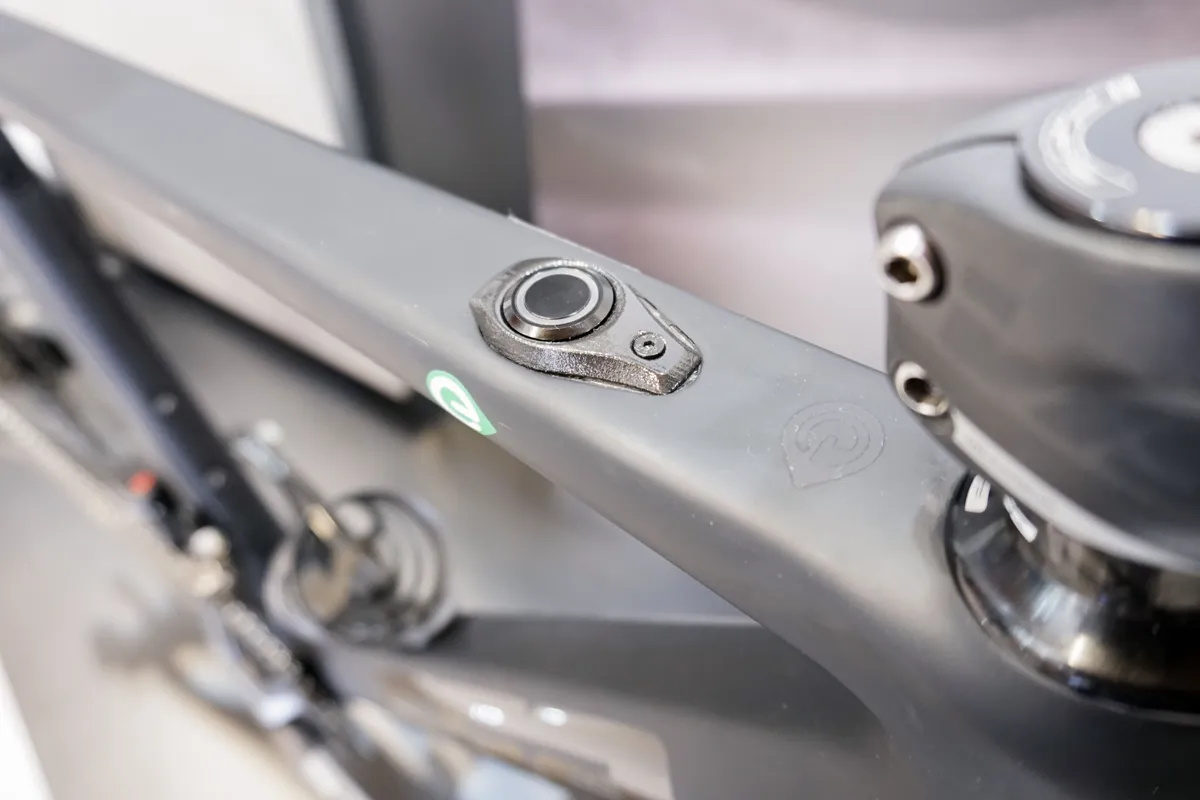
The button’s LED light cycles through different colours depending on which mode you’re in, and also indicates battery life in 25 per cent increments.
FSA has also developed an app to accompany its new system. The app not only records the bike’s ride and usage statistics, but can also display remaining battery life and features turn-by-turn GPS navigation.
If your FSA-equipped electric bike runs into the technical difficulties the app has a diagnostic function and can communicate directly with FSA.
FSA System wheel and bike compatibility
Currently the FSA System is only available as an OEM product and requires the frame to have suitable levels of integration for the motor to work.
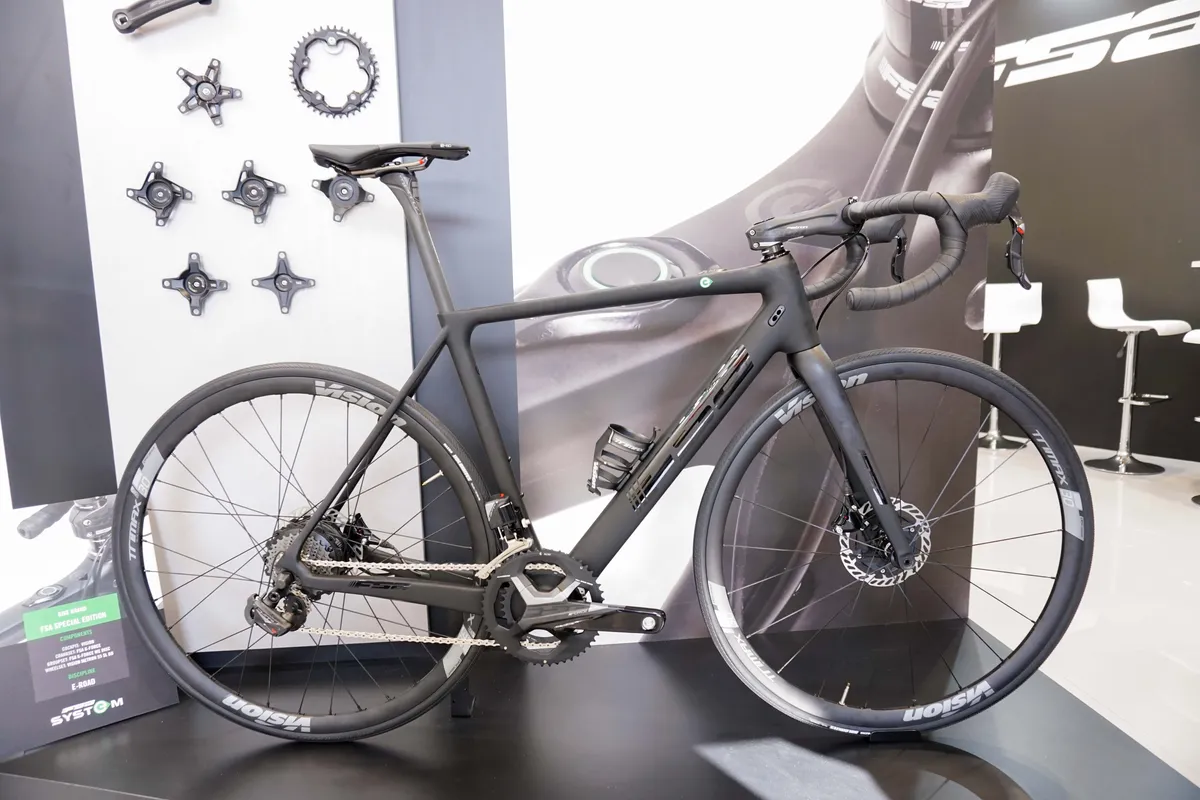
These include an integrated power button, integrated battery and cable routing, although some bike manufacturers already have frames that should be compatible such as Orbea, Bianchi and Focus to name but a few.
We asked whether the FSA System uses technology licensed from brands such as Orbea who already have similar-looking motors in place. FSA was quick to respond telling us that its System is made entirely in-house using FSA designed, engineered and produced technologies.

FSA System limitations and advantages
Moving the weight of an electric bike motor from the frame to the rear hub does create some potential issues: it increases the weight at the bike’s wheels by replacing a traditional hub with a motor hub, and can make it slower and harder to accelerate.
The power assistance of the motor should negate this almost entirely, however. The whole system weighs just 4kg (claimed) and, by putting the motor in the bike’s rear hub, FSA is saving overall weight by not needing a separate motor and a standard hub.
